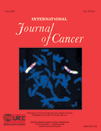Cytokine-containing gelfoam implants at a postsurgical tumor excision site to stimulate local immune reactivity
Abstract
We previously demonstrated increased numbers of CD34+ progenitor cells in the peripheral blood of tumor bearers. Also demonstrated was the feasibility of chemoattracting these cells by sponge implants containing VEGF. The present study used a murine Lewis lung carcinoma (LLC) model to test if CD34+ cells that are chemoattracted to a tumor excision site can be differentiated in situ into dendritic cells and whether this leads to increased local immune reactivity. After surgically excising established LLC tumors, mice received at the excision site gelatin sponge implants containing VEGF to chemoattract CD34+ cells, and/or GM-CSF plus SCF to induce CD34+ cell differentiation into dendritic cells. In some studies, lysates of GFP-transfected LLC cells (LLCGFP) were also included in the implants as a source of tumor antigen. After 2 weeks, implants and local lymph nodes were removed and analyzed. Implants containing VEGF, GM-CSF/SCF or VEGF/GM-CSF/SCF had a higher proportion of CD34+ cells compared to control implants. However, the number of dendritic cells was higher in implants containing GM-CSF/SCF or VEGF/GM-CSF/SCF than those containing either VEGF or diluent. Regional lymph node from mice containing GM-CSF/SCF or VEGF/GM-CSF/SCF implants showed increased dendritic cell levels. However, when lysates from LLCGFP were added to the implants, the highest proportion of dendritic cells associated with GFP was in lymph nodes of mice containing GM-CSF/SCF implants. Lymph node cells from mice with GM-CSF/SCF or VEGF/GM-CSF/SCF had a higher level of proliferation and IFN-γ secretion in response to in vitro LLC lysate challenge, with the greatest response being from lymph node cells of mice with GM-CSF/SCF implants. These results suggest the feasibility of using GM-CSF/SCF-containing implants to increase dendritic cell levels, uptake of tumor antigens, trafficking to lymph nodes and stimulation of immune reactivity at tumor excision sites with residual tumor. © 2006 Wiley-Liss, Inc.




